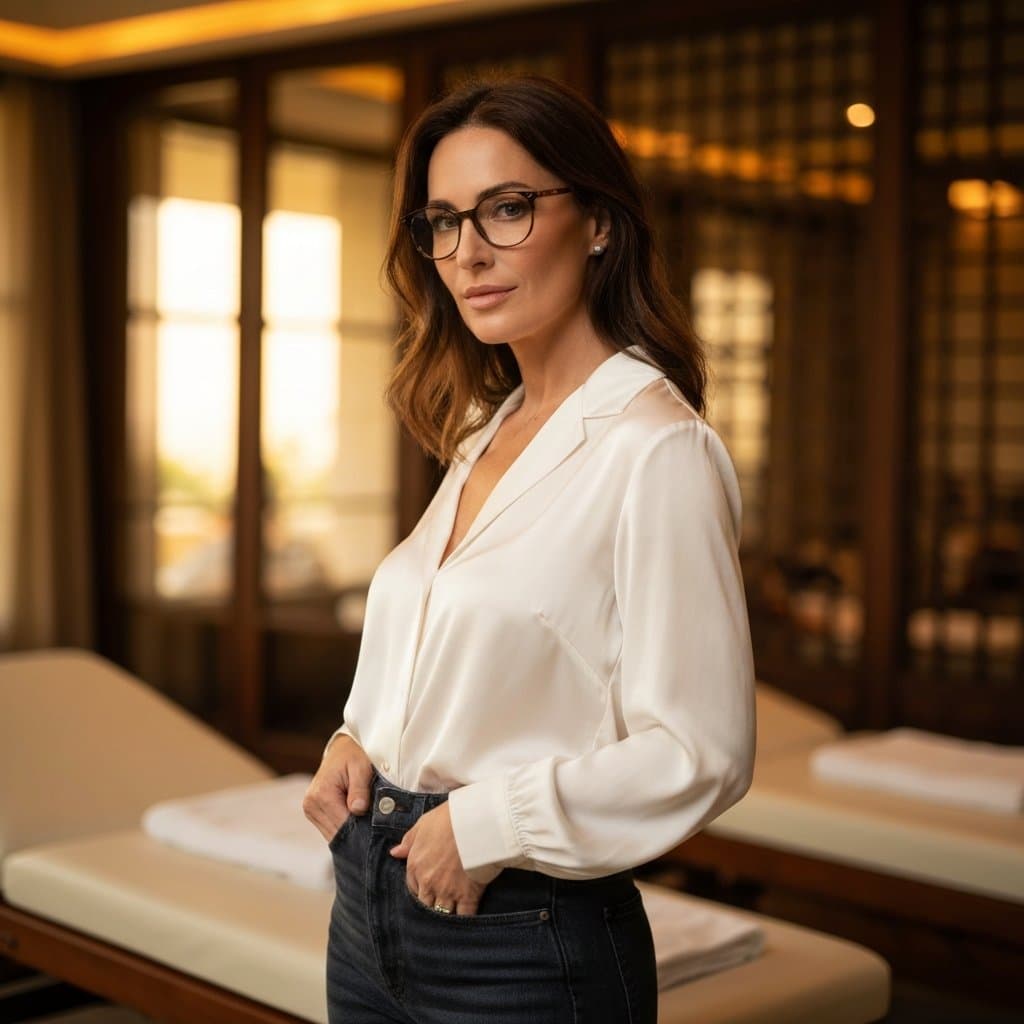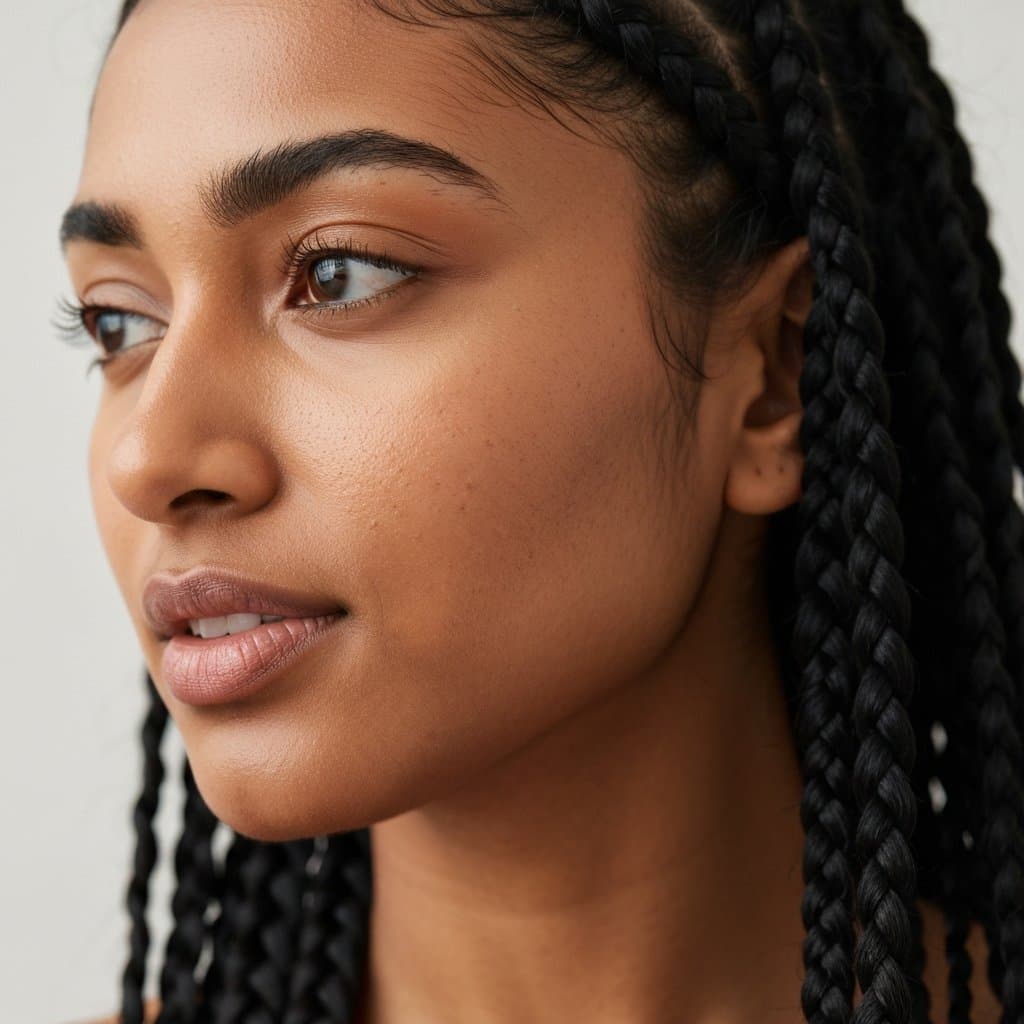The Butterfly Haircut Guide: How to Get 2025's Hottest Layers | Your Ultimate Styling Manual
The Viral Hairstyle Taking Flight: An Introduction to Butterfly Layers
The world of hair fashion is cyclical, and right now, we're seeing a breathtaking revival of voluminous, airy styles that blend the best of decades past. Leading this charge is the undeniably stunning butterfly haircut. This viral trend has flooded social media feeds and captured the attention of style icons everywhere, offering a perfect fusion of 70s feathered freedom and 90s supermodel glamour. It's a cut that promises movement, volume, and the clever illusion of two haircuts in one, making it one of the most requested styles in professional salons today.

So, what is the magic behind this transformative look? The butterfly haircut is a highly technical, layered style characterized by short, face-framing pieces on top that cascade seamlessly into longer, flowing lengths at the back. The effect is one of soft, fluttering wings around the face, hence the name. This intelligent structure adds incredible body and shape without sacrificing overall length. In this comprehensive guide, we will delve deep into the world of butterfly layers, exploring the anatomy of the cut, determining if it's the right choice for your hair type and face shape, and providing a step-by-step masterclass on styling and maintenance. Get ready to embrace the volume and let your style take flight.
What Exactly is the Butterfly Haircut? Decoding the Viral Trend
The term "butterfly haircut" might sound whimsical, but it describes a very specific and intentional cutting technique. At its core, it's a tale of two haircuts. The top section of the hair is cut with significantly shorter layers, often starting around the chin or jawline, creating a shape reminiscent of a shorter bob or a long set of curtain bangs. These layers are designed to be airy and voluminous, creating the signature face-framing 'wings' that can be styled to flick outwards. This top section is what provides the majority of the shape and volume you see from the front.
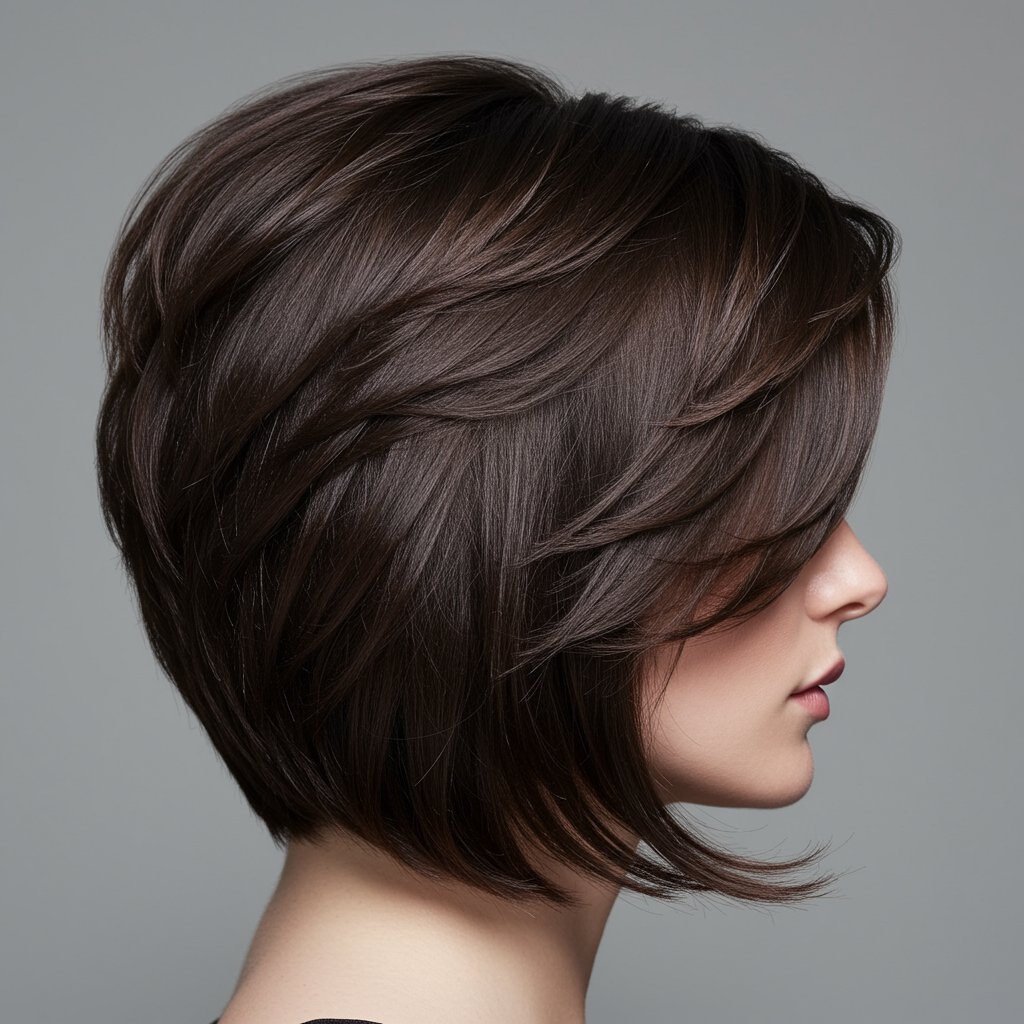
Beneath this shorter, bouncier layer lies the second part of the cut: the length. The hair at the back and underneath is kept long, with subtle, blended layers added to create movement and prevent the style from looking disconnected or mullet-like. This duality is the genius of the butterfly haircut. It allows you to enjoy the playful, voluminous feel of shorter hair around your face while retaining the elegance and versatility of long hair. It’s the ultimate solution for those who crave a dramatic change without the commitment of a big chop, offering a fresh look that feels both modern and timelessly chic.
When you tie the longer sections back, the shorter layers fall perfectly to frame the face, creating a faux-bob effect that is effortlessly stylish. This versatility sets it apart from other popular layered cuts. Unlike a traditional shag, which features heavy layering throughout the crown for a rock-and-roll texture, the butterfly cut is softer and more glamorous. And while the wolf cut leans into a choppy, edgy aesthetic, the butterfly haircut is all about polished volume and fluid, feminine lines. It’s a sophisticated style that relies on precision cutting to achieve its beautiful, blended, and dynamic shape.
The Anatomy of Butterfly Layers: A Stylist's Perspective
Achieving the perfect butterfly haircut is an art form that hinges on a deep understanding of hair structure and precision cutting. It's far more complex than simply adding a few layers. An experienced stylist approaches this cut by strategically sectioning the hair and treating the top and bottom portions with distinct techniques to create the signature dual-length effect.
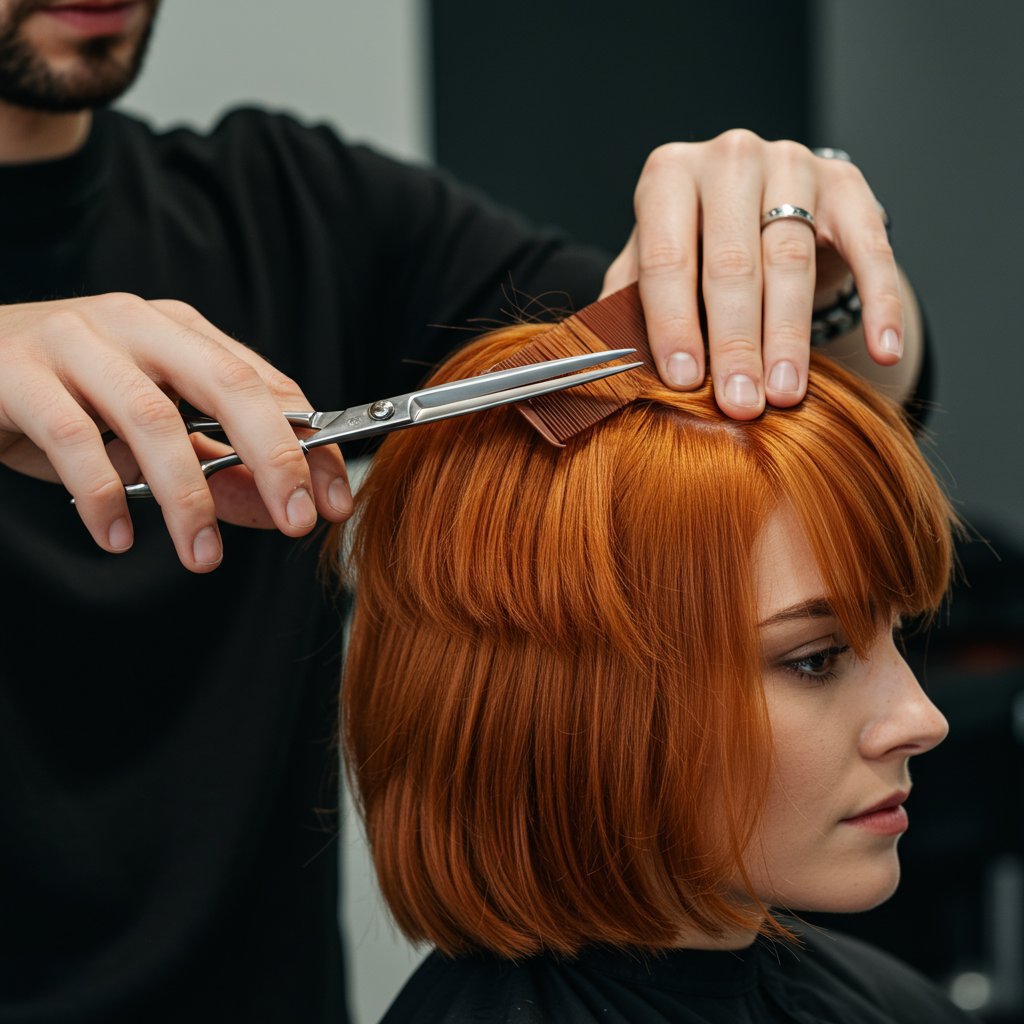
The Top "Wing" Layers
The most critical component of the butterfly haircut is the shorter, face-framing top section. A stylist will typically isolate a horseshoe-shaped section at the crown and front of the head. These are the layers that create the 'wings'. They are often cut using over-direction, pulling the hair forward and up to create soft, cascading layers that fall beautifully around the face. The shortest point usually begins somewhere between the cheekbone and chin, depending on the client's face shape and desired outcome. The goal is to build volume at the crown and create movement that draws attention to the eyes and cheekbones, much like expertly cut curtain bangs.The Lower "Length" Layers
Once the top layers are perfected, attention turns to the longer hair underneath. The objective here is to maintain length while infusing the hair with movement and preventing a blunt, heavy baseline. A stylist will connect the top layers to the bottom using long, seamless vertical layers. This technique removes weight from the ends, encourages a soft curl or wave, and ensures the hair doesn't look like two separate, unblended haircuts. This careful blending is what separates a professional butterfly cut from a DIY attempt; it requires a skilled hand to ensure the transition between the short and long sections is invisible and fluid.The Art of Blending and Texturizing
The final, crucial step is the meticulous blending and texturizing process. After the main shapes are cut, a stylist will often go back in with slide-cutting or point-cutting techniques. This refines the layers, softens any hard edges, and enhances the airy, feathery texture that defines the butterfly look. For thicker hair, this step is essential for removing bulk and ensuring the 'wings' are light and fluttery. For finer hair, subtle texturizing can add volume and prevent the ends from looking sparse. This detailed finish is what brings the entire cut to life, ensuring it moves beautifully and styles with ease.Is the Butterfly Haircut Right for You? Hair Types and Face Shapes
One of the reasons the butterfly haircut has become so universally popular is its remarkable adaptability. However, like any hairstyle, it works best when tailored to an individual's specific hair type, texture, and face shape. Consulting with a stylist is the best way to determine how the cut can be customized for you, but here are some general guidelines to consider.
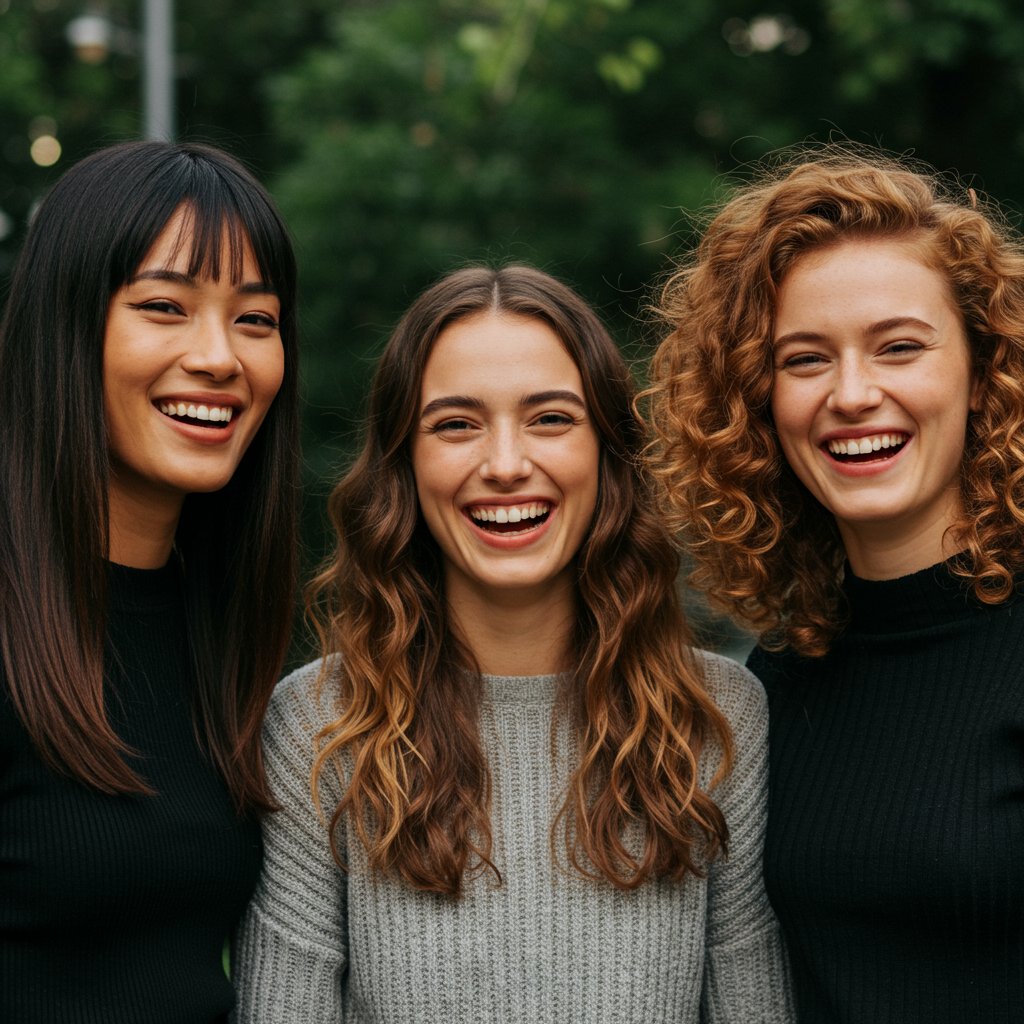
Decoding by Hair Type
- Thick or Wavy Hair: This is the ideal canvas for a butterfly haircut. The layers work wonders to remove excess weight and bulk, giving thick hair beautiful shape and movement. The natural wave pattern will enhance the feathered texture of the layers, making styling a breeze. The cut allows wavy hair to be its best, most voluminous self.
- Straight Hair: Straight hair can absolutely rock a butterfly cut, but it will require more styling effort to achieve the signature volume and flick. Without styling, the layers may lie flat. A good volumizing mousse and a round-brush blowout or the use of rollers will be essential to bring out the shape and create that bouncy, airy effect.
- Fine Hair: Those with fine hair should approach this cut with caution, but it's not impossible. The key is strategic, minimal layering. An unskilled cut could remove too much weight, making the ends appear thin and sparse. An experienced stylist will focus on creating the face-framing shape while keeping the layers in the back longer and more subtle to preserve density.
- Curly Hair: The butterfly cut can be stunning on curly hair, creating a gorgeous, rounded shape with tons of volume. It’s crucial to seek a stylist who specializes in cutting curly hair, as they will likely use a dry-cutting technique to cut each curl individually, ensuring the layers fall naturally and don't create unwanted frizz or awkward shapes.
Flattering for Every Face Shape
The face-framing nature of the butterfly haircut makes it incredibly flattering for a variety of face shapes.- Oval: Considered the most versatile face shape, oval faces can pull off nearly any variation of the butterfly cut.
- Round: The layers starting around the chin or jawline can add definition and elongate a round face, creating the illusion of more angular contours.
- Square: The soft, feathered layers are perfect for softening a strong jawline, adding a touch of feminine grace to a square face shape.
- Heart: For heart-shaped faces, the volume created by the layers around the chin area can help to balance a wider forehead and a narrower chin, creating beautiful harmony.
The Ultimate Styling Guide: Achieving the Perfect Butterfly Blowout
A professional butterfly haircut provides a beautiful foundation, but the right styling techniques are what truly make it come alive with bombshell volume and movement. Mastering the at-home blowout is the key to recreating that fresh-from-the-salon look every day. It’s all about enhancing the layers and directing them to create that signature feathered effect.

Step 1: Prep Work is Key
Great styling starts with the right products. On damp, towel-dried hair, begin by applying a volumizing mousse or root-lifting spray directly at the roots. This will provide the foundation for the height and body the style is known for. Next, distribute a high-quality heat protectant spray from mid-lengths to ends. This is a non-negotiable step to shield your hair from damage and keep your layers looking healthy and sharp. Don't be afraid to be generous with the product, as it’s crucial for building hold and volume.Step 2: The Round Brush Blowout Technique
Divide your hair into manageable sections. Using a large ceramic or boar bristle round brush, start with the bottom, longer layers. Position the brush underneath a section of hair at the root, and with the blow dryer nozzle pointing downwards to prevent frizz, pull the brush through to the ends, slightly curling them under for a polished finish. For the top 'wing' layers, the technique changes. Take a section, place the round brush on top of it, and blow-dry the hair up and away from your face. As you reach the ends, roll the brush backwards to create that signature outward flick. This motion is what creates the 'butterfly' effect and opens up your face.Step 3: Using Rollers for Maximum, Lasting Volume
For truly show-stopping volume that lasts all day, rollers are your best friend. After blow-drying each of the top sections, and while the hair is still warm, wrap it around a large velcro or hot roller. Make sure you are rolling the hair away from your face. The larger the roller, the more volume and soft curl you will achieve. Leave the rollers in until your hair has completely cooled down, which allows the hair cuticle to close and sets the shape. This single step can elevate your style from simply nice to absolutely spectacular.Step 4: Finishing Touches
Once you remove the rollers, gently shake your hair out with your fingers—avoid brushing, as this can pull down the volume. To enhance the texture and separation of your layers, you can use a light texturizing spray. For hold, finish with a flexible-hold hairspray that will keep the bounce and movement without making your hair feel stiff or crunchy. A tiny drop of shine serum on the ends can add a final touch of polish and combat any flyaways.Maintaining Your Butterfly Layers: Salon Visits and At-Home Care
The beauty of a precision cut like the butterfly hairstyle lies in its shape, and maintaining that shape is crucial for keeping the look fresh and dynamic. This involves a combination of regular professional maintenance and diligent at-home care to keep your hair healthy from root to tip.

A structured cut like this requires regular trims to keep the layers from growing out and losing their distinct shape. To maintain the integrity of the short 'wing' layers and prevent the long layers from developing split ends, it's recommended to book a maintenance appointment at a salon every 8 to 12 weeks. This will ensure your cut remains balanced, bouncy, and easy to style. Trying to stretch appointments too long can result in the layers becoming heavy and the overall style losing its signature airy quality.
At home, focus on hair health. Since the style relies on volume and movement, healthy hair is paramount. Use a sulfate-free shampoo and a hydrating conditioner to nourish your strands without weighing them down. Incorporate a weekly deep conditioning mask or treatment, paying special attention to the longer lengths and ends, which are more susceptible to dryness and damage. Because this style often involves heat styling to achieve its full potential, a high-quality heat protectant is your most important daily product to prevent breakage and keep your layers looking sharp and polished.
Butterfly Layers vs. The Wolf Cut vs. The Shag: A Comparative Guide
In the world of modern layered hairstyles, several trends often get grouped together. While they share common roots in vintage aesthetics, the butterfly haircut, the wolf cut, and the shag each offer a distinctly different vibe. Understanding their key differences can help you and your stylist choose the perfect look for your personality and hair goals.
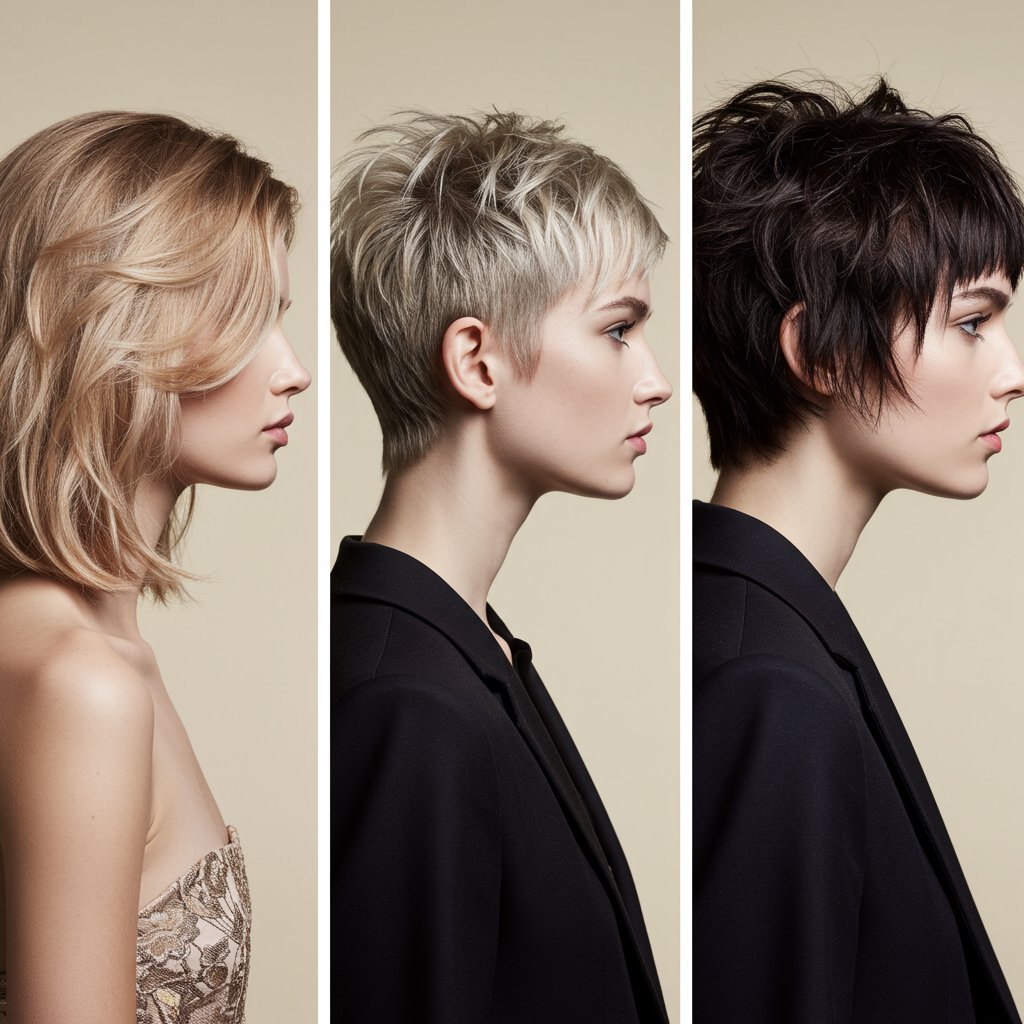
The Butterfly Haircut: Glamorous & Voluminous
The butterfly haircut is the most polished and glamorous of the trio. Its primary focus is on creating soft, blended volume and elegant face-framing. The layers are less choppy and more fluid, creating a luxe, 'bombshell' effect reminiscent of 90s supermodels. The key differentiator is its dual-length structure—distinctly shorter layers on top with preserved length below. The overall feeling is airy, feminine, and sophisticated.The Wolf Cut: Edgy & Textured
The wolf cut is a true hybrid of the shag and the mullet, resulting in a much edgier, rock-and-roll aesthetic. It features short, choppy layers on top and longer, thinned-out lengths in the back. The texture is intentionally piecey and disconnected, creating a wild, untamed look. While the butterfly cut aims for a soft flick, the wolf cut embraces a more tousled, messy-chic finish. It’s a bold statement style that is less about glamour and more about attitude.The Shag: Effortless & Rock-Inspired
The classic shag haircut is defined by heavy layers concentrated at the crown, with progressively longer, wispier layers towards the ends. The goal of a shag is to create maximum texture and a slightly undone, effortless look, famously rocked by music legends of the 70s. Unlike the butterfly cut's distinct sections, a shag's layers are more uniformly distributed throughout the hair. It’s a versatile cut that can be soft or edgy, but its essence is rooted in a carefree, textured, and often fringe-heavy style.Pro Tips for Customizing Your Butterfly Haircut
While the classic butterfly haircut is stunning on its own, its true strength lies in its customizability. A skilled stylist can tweak the technique to perfectly suit your features, lifestyle, and aesthetic. One of the most popular and seamless additions is a set of curtain bangs. These longer, center-parted bangs blend flawlessly into the shorter 'wing' layers of the butterfly cut, creating an even more dramatic and cohesive face-framing effect that beautifully highlights the eyes and cheekbones.

Color is another powerful tool for enhancing this cut. Strategic hair color placement, such as balayage or subtle highlights, can create incredible dimension and make the layers pop. Lighter pieces woven through the shorter top layers will catch the light and draw attention to the voluminous shape, while a slightly deeper color on the longer sections underneath can add depth and the illusion of even greater density. This interplay of light and shadow makes the fluttering movement of the layers even more captivating.
Don't assume the butterfly cut is only for very long hair. The core principle of shorter top layers over a longer bottom section can be adapted for medium and even shoulder-length hair. A stylist can create a 'butterfly bob' or 'lob' that provides the same face-framing volume and movement on a shorter canvas. This versatility ensures that the essence of this beautiful, dynamic style can be enjoyed by almost anyone, making it a truly adaptable and enduring trend.
Frequently Asked Questions (FAQ)
How much does a butterfly haircut typically cost?
The cost can vary significantly based on salon location, stylist experience, and hair length. As it is a technical, precision-based cut, you can expect it to be priced as a designer or specialty cut, often ranging from $80 to $200+.Can I get butterfly layers with fine hair?
Yes, but with modifications. An experienced stylist will use fewer, more strategic layers to create the face-framing effect while preserving as much density as possible through the ends to avoid a sparse look.Is the butterfly haircut high maintenance?
The cut itself is not high maintenance in terms of frequent trims (every 8-12 weeks is typical). However, the styling can be. To achieve the signature voluminous, blown-out look, it does require regular heat styling with a round brush or rollers.What are the essential products for styling butterfly layers?
The top three must-haves are a good volumizing mousse to build body at the roots, a quality heat protectant spray to prevent damage, and a flexible-hold hairspray or texturizing spray to set the style without stiffness.How is a butterfly cut different from regular long layers?
Regular long layers are typically blended throughout the entire length of the hair to add movement. The butterfly cut is structurally different, featuring a distinctly shorter set of layers on the top and around the face, creating a 'two-cuts-in-one' effect that provides much more dramatic volume at the crown.Does the butterfly haircut work on curly hair?
Absolutely! On curly hair, it can create a beautiful, rounded silhouette with amazing volume. It's essential to see a stylist who is an expert in cutting curly hair, as they will tailor the technique to your specific curl pattern for a frizz-free, well-defined shape.Conclusion: Embrace the Transformation
The butterfly haircut is more than just a passing trend; it's a celebration of volume, movement, and versatile beauty. By masterfully blending short, face-framing layers with elegant length, it offers a transformative experience that can refresh your look without a drastic commitment. It’s a style that empowers you to have it all: the playful energy of short hair and the timeless glamour of long locks.
From its flattering effects on nearly every face shape to its adaptability across different hair types, the butterfly haircut has firmly established itself as a modern classic. Whether you're seeking to add life to limp strands, remove weight from thick hair, or simply want a chic and sophisticated change, this cut delivers. To truly unlock its potential, the key is a professional consultation. An experienced stylist can analyze your hair and features to customize the perfect butterfly layers for you, ensuring you leave the salon feeling confident, beautiful, and ready to take flight.
